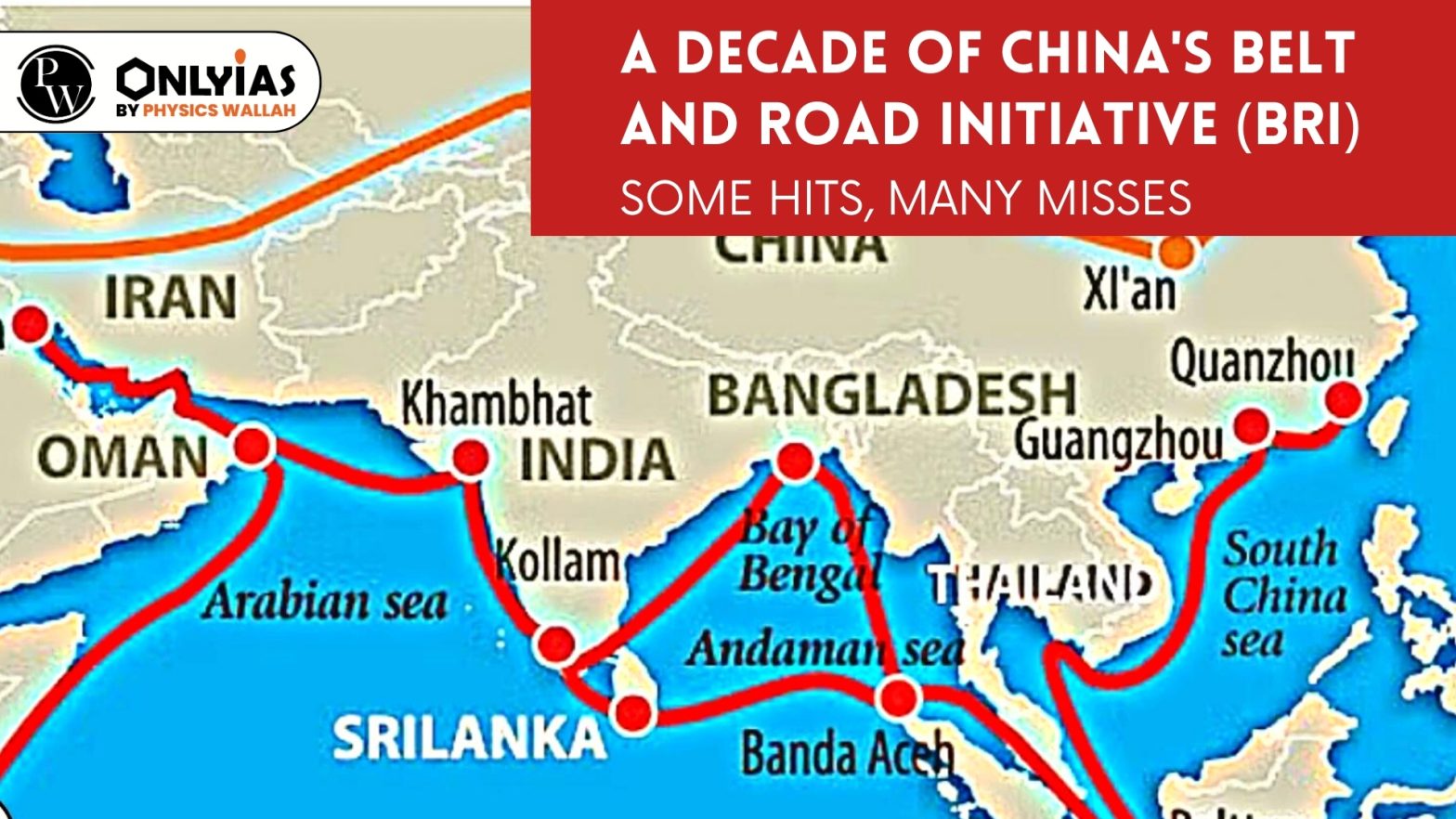Context:
- This article is based on an Editorial “The BRI at 10, some hits, many misses” which was published in the Hindu. Recently, the Third Belt and Road Forum for International Cooperation was convened in Beijing, China.
| Relevancy for Prelims: Belt and Road Initiative (BRI), China–Pakistan Economic Corridor (CPEC) World Bank, and India-Middle East-Europe Corridor.
Relevancy for Mains: China’s Belt and Road Initiative (BRI), its associated challenges and alternatives to this BRI. |
What is the China Belt and Road Initiative?
- Aim: The BRI, often compared to the Marshall Plan, was launched by Mr. Xi to brand himself as a global statesman and project China’s power and influence overseas.
- Connectivity: As per released white paper on BRI (“The Belt and Road Initiative: A Key Pillar of the Global Community of Shared Future”) over 200 BRI cooperation pacts had been inked with over 150 nations.
- Investment: The document also stated that total two-way investment between China and partner countries from 2013 to 2022 touched $380 billion.

How does China benefit from the Belt and Road Initiative (BRI) in terms of its economic and geopolitical interests?
- Strength & Influence: A gateway for China to transition from a regional power with global influence to a global power with comprehensive strength.
- Globalization: China’s bid to reboot globalization and rectify its shortcomings.
- Alternative Trade Routes: China’s need to develop new transport and trade arteries as alternatives to the Strait of Malacca.
- Infrastructure Development: According to the World Bank, millions of people across the globe are facing challenges in terms of electricity, potable water, and coverage of a broadband signal. Under China’s Marshall Plan, motorways, power plants, ports, railway networks and digital infrastructure have been built.
The Ugly Reality
- Reports have highlighted issues related to ecological damage, displacement of people, disputes over payouts and labor unrest.
- Various findings on case studies of Indonesia, Laos and Pakistan reveal serious issues and undermine its tagline of ‘win-win cooperation’ as it is only a win for China twice over at the cost of other stakeholders.
- India has steadfastly opposed CPEC over issues related to sovereignty and had raised concerns over issues of unsustainable debt.
Global Alternatives
- US-Japan Infrastructure Initiative : In the Donald Trump era, the United States and Japan initiated the “United States-Japan infrastructure investment alternatives in the Indo-Pacific region”.
- Build Back Better World’ (B3W): The US announced the ‘Build Back Better World’ (B3W) initiative as the Partnership for Global Infrastructure and Investment, which aims to channelise private capital into climate change and energy security, health care and health security, digital technology, and gender equity.
- IMEC: The India-Middle East-Europe Corridor (IMEC) seeks to link India, West Asia, and Europe through railways and shipping lines.
Also read: India-China Relationship
Conclusion:
After completion of a decade of BRI, experiencing its real motives, and at a time when China is facing economic worries related to debt and unemployment, India should build her relations more strongly with neighbors and the world to counter the unsustainable and debt-trap ambitions of China.
| Prelims Question (2016)
‘Belt and Road Initiative’ is sometimes mentioned in the news in the context of the affairs of
(a) African Union
(b) Brazil
(c) European Union
(d) China
Ans: (d) |
![]() 19 Oct 2023
19 Oct 2023


